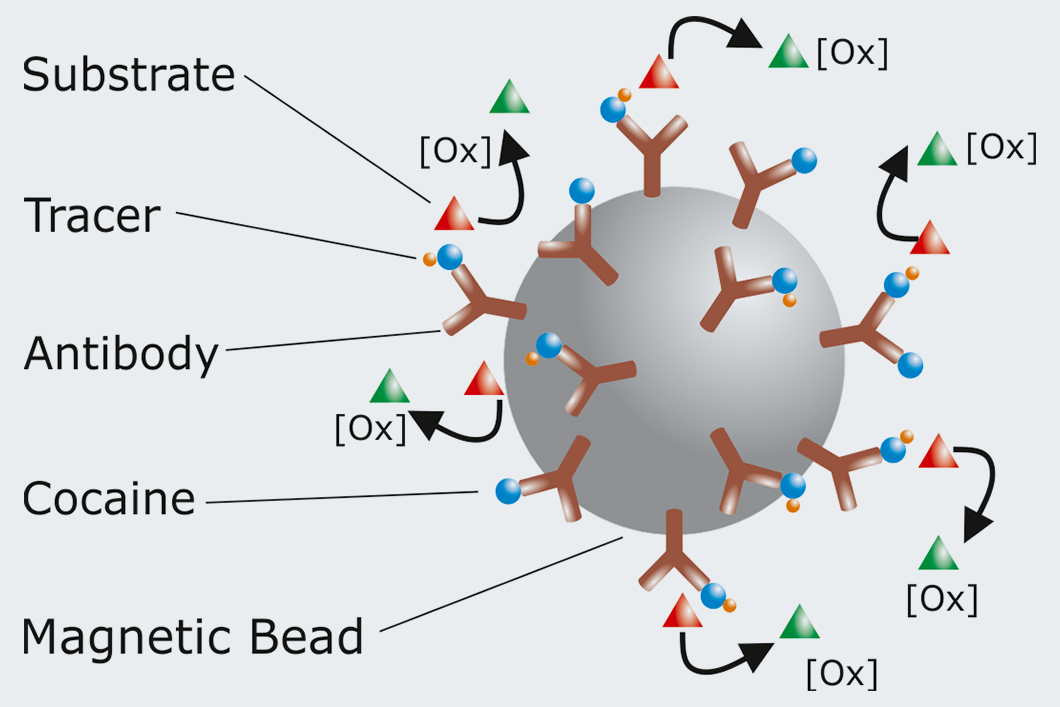
Magnetic beads as base for an electrochemical immunoassay carried out in a microfluidics chip
Source: BAM, Divisions Environmental Analysis & Chemical and Optical Sensing
The fast and accurate determination of cocaine in body fluids such as saliva and urine remains animportant task in on-the-spot monitoring of drivers in public traffic and for the testing of employees in critical workplaces (transport, construction or energy generation industries, for example). Numerous quick tests and portable devices have been brought to market in the last years. Alas, many of them do not always fulfil reliability requirements, especially in low concentration ranges.
In surface waters the detection of illicit drugs (cocaine, cannabinoids, amphetamines, heroin etc.) is also difficult due to the concentrations in the nanogram per litre range. The determination of these substances, also called “anthropogenic markers”, allows for interesting conclusions on consumer behaviour. Here, too, there is a wish for devices and tests for inexpensive on-site analysis.
The article featured here describes our modular approach for the detection of cocaine, integrating an antibody-based laboratory test (ELISA) into a microfluidic set-up. The antibodies can be manipulated in the system because they are immobilised on magnetic beads. The hybrid microfluidic system consists of a combination of (micro)tubing and pumps for delivery and mixing of the reagents and a static detection chip that carries a screen-printed (micro)electrode. With this setup, in an electrochemical enzyme immunoassay, the signal is generated via cyclic voltammetry measurements.
The prototype showed a stable relation between concentration and signal and reached a detection limit of 0.15 nanogram per litre in water within an overall assay time of 25 minutes. In the complex matrices saliva and urine concentrations of 1 nanogram per litre could be detected, with a working range up to 1 milligram per litre.
Such an embedded biosensor could be easily adapted for other analytes via grafting antibodies with other specificities on the magnetic beads. The combination of beads with various antibodies and dedicated enzyme/substrate combinations could allow for multiplexing, i.e. parallel detection of different drugs, for example in mobile devices for the authorities responsible for traffic surveillance and water resources protection.
Microfluidic electrochemical immunosensor for the trace analysis of cocaine in water and body fluids
Nahla A. Abdelshafi, Jérémy Bell, Knut Rurack, Rudolf J. Schneider
Drug Testing and Analysis, 2018, 1–9.
BAM, Department of Analytical Chemistry; Reference Materials, Divisions Environmental Analysis & Chemical and Optical Sensing


